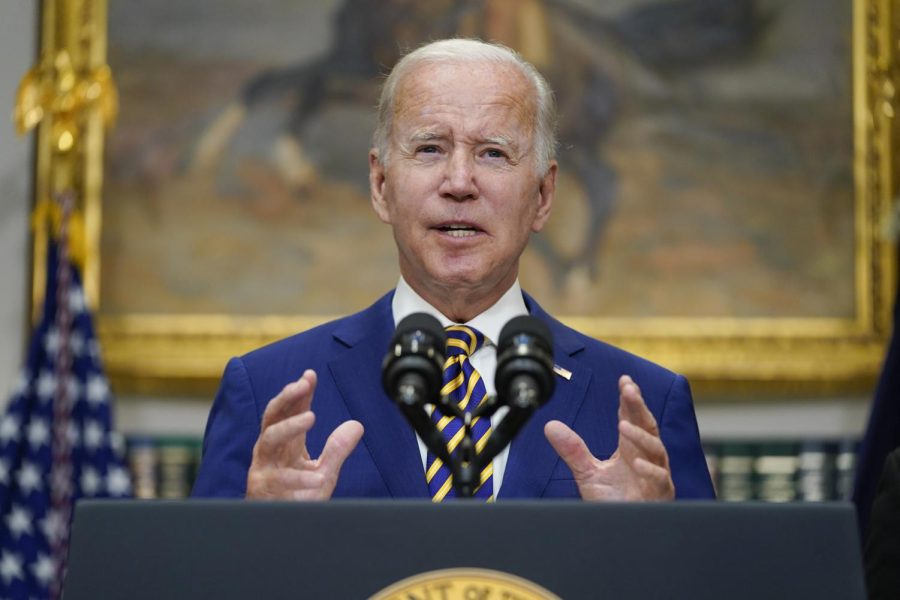Opinion: Biden’s Student Loan Forgiveness is a step in the wrong direction
President Joe Biden speaks about student loan debt forgiveness in the Roosevelt Room of the White House, Wednesday, Aug. 24, 2022, in Washington.
Biden’s student loan forgiveness plan is a step in the wrong direction, despite its short term effects.
On Aug. 24, President Joe Biden announced his plan to combat the high costs of college. The plan details several provisions, with the most eye-popping being student loan debt forgiveness. This plan provides $10,000 in student loan debt cancellation for non-Pell Grant recipients and $20,000 for Pell Grant recipients. While this debt cancellation will help many current college students, it is going to negatively impact Americans overall.
While the details on how it will be paid for are not yet in stone, in a statement Biden said that “There is plenty of deficit reduction to pay for the programs — cumulative deficit reduction — to pay for the programs many times over.” Regardless, the American people ultimately are the ones paying either through raised taxes or decreased spending on other programs.
We all understand that the high cost of college is a problem and this legislation does not fix that problem. Biden’s student loan forgiveness doesn’t lower the cost of going to college. Incoming students will still have to handle their student loans by themselves.
This means that the barrier for entry from low income communities is still there, unless the loan forgiveness were to be a promised recurrence. This would further add to the deficit in order to pay for new loan forgiveness with increased enrollment rates and therefore be an unrealistic solution. With low income communities having no reason to expect a recurrence of debt forgiveness, the likelihood of that demographic entering college does not increase.
As great as this debt cancellation sounds, the payment has to come from somewhere, and the cost ultimately lies on the taxpayer as the deficit piles up. While there has been no clear estimate on the overall cost from the government, White House Press Secretary Karine Jean-Pierre said it could potentially reach about $24 billion per year. According to the Penn Wharton Budget Model, the overall cost is estimated to be between $469 billion to $519 billion over the 10 year budget window to be added to the deficit.
As a temporary solution, Biden’s student loan forgiveness feels like a Band-Aid on a bullet wound.
Despite the issues with this plan, it is important to note that many current and former students will benefit significantly. The absurd increase in cost to attend college has been well documented, even in just the past decade. According to a College Board report, “Between 2011-12 and 2021-22, published tuition and fees increased by 9% at public four-year institutions and by 14% at private nonprofit institutions.”
Students receiving this forgiveness will be able to enter the workforce, buy homes, start families and invest in business ventures sooner with less weight on their shoulders.
Politically, the student loan forgiveness comes at a favorable time as it gives Biden and the Democratic Party a way to win over the youngest generation of voters. With election season creeping up, this policy feels more like a way to gain favor from the American people than a solution to a substantial problem.
At the end of the day, college is still a choice, and this choice should not be paid for by others. We, as students, knew exactly what we were getting into, and those that took out loans knew the risks. With this debt cancellation, workers pay for the choice of students while future students and non-borrowers are left to pay for college independently.







